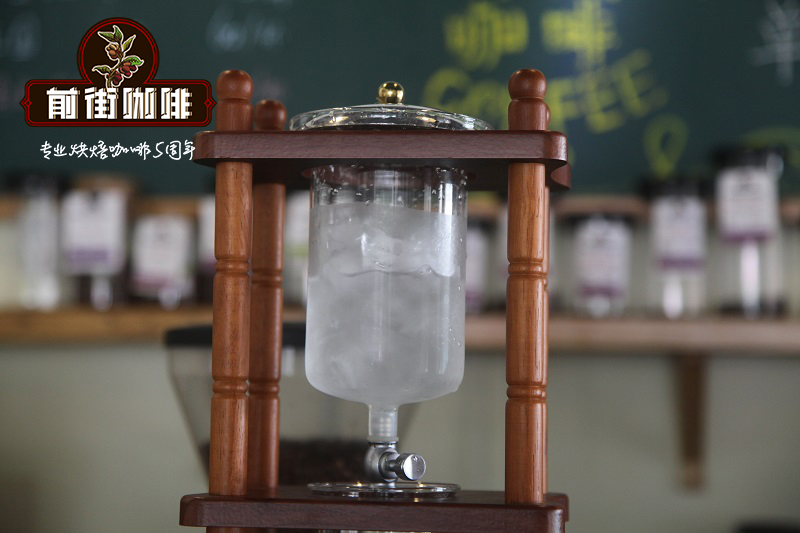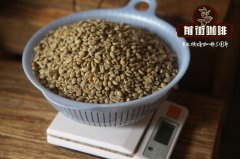What are the characteristics of Brazilian coffee? Growing kaduipin in FAZENDAS KLEM Coffee Manor, Brazil

Professional coffee knowledge exchange more coffee bean information please follow the coffee workshop (Wechat official account cafe_style)
What are the characteristics of Brazilian coffee? What is the history of growing kaduai varieties at FAZENDAS KLEM Coffee Manor in Brazil?
Fazendas Klem is the leader of the Matas de Minas project and a model of organic production in the region. After extensive study of organic processing, soil conservation and many other variables, they have developed a way to grow coffee using local materials. This constitutes the use of every available organic material, but also the use of minerals found near large rock formations. Only a few years ago, they decided to start exporting themselves and provide technical assistance to others in the region.
Step by step, they spread best practices from their own path to a completely organic one. As second-season crops, they planted trees that produce small avocados and used the same soil and certification. Klem Manor is USDA Organic,Rainforest Alliance and UTZ certified. The whole area is divided into several areas, all of which are raised by the Klem family (the existing five brothers) and several other families. All microbatches are done manually and are completely separated using a raised drying bed in a solar dryer. Founder and grandfather Nagype Klem still works in the main part of the farm, next to where they bake samples and cups all the coffee throughout the season.
The whole area is divided into several areas, all of which are raised by the Klem family (the existing five brothers) and several other families. All microbatches are done manually and are completely separated using a raised drying bed in a solar dryer. Founder and grandfather Nagype Klem still works in the main part of the farm, next to where they bake samples and cups all the coffee throughout the season.
Catuai is the intersection of efficient Mundo Novo and compact Caturra, manufactured by Instituto Agronomico (IAC) in the state of Campinas Sao Paulo, Brazil. Compared with bourbon, the factory is more efficient, in part because of its small size and tight spacing of plants; it can almost double the planting density. The shape of the plant makes it relatively easy to treat pests and diseases. Its main features are high vitality and low height; it is more compact than Caturra. It is very vulnerable to coffee leaf rust.
Catua í comes from Guaranido Mother, which means "very good". The variety was founded in 1949 by crossing yellow Caturra and Mundo Novo, which was originally called HMUE 2077. There are yellow fruit and red fruit types, and since then, there have been many choices in different countries.
It was first launched in Honduras in 1979 and was tested by InstitutoHondure ñ odeCaf é (IHCAF É). After selecting two planting lines in IHCAF É, it was released commercially in 1983. Today, Catuai accounts for nearly half of Arabica coffee cultivation in Honduras. Researchers at IHCAF É are actively working with Catuai on breeding, including the creation of hybrid hybrids between the Catuai and Timor Hybrid series.
Catuai's small size enabled it to plant intensively and harvest more efficiently, which partly led to an increase in the cultivation of all-sun coffee in Central America in the 1970s and 1980s. Made by the children of Nagipe Viana Klem, the founder of Fazenda Klem, it comes entirely from trees in Arabica, a respected variety of Catuai. This is a "natural" or dried coffee, which means that beans or seeds are dried and wrapped in the whole fruit, rather than after the fruit has been removed, such as wet or "washed" processed coffee. Naturals forms the backbone of the Brazilian coffee industry, but this reflects a particularly elaborate approach to this approach.
The drying process seems simple: pick the fruit and place it in the sun until it changes from red to brown to near, and then step by step remove it from the thick dry outer layer to expose the mung beans. This is a method suitable for dry areas, where sunlight and heat can dry the seeds in the whole pericarp.
It is often called "natural coffee" because it is simple and because the fruit remains intact and undisturbed, it is a bit like drying into raisins. Because it requires very little investment, the dry process is by default to make cheap commercial-grade coffee in areas with the right climate to dry fruits and seeds. But in wet or humid areas, this is a failure. If the drying process is not fast enough, the fruit will degrade, rot or mildew.
Dry processed coffee can also be very inconsistent. If you want a clean, strong, sweet, strong cup, the DP process requires more manual labor than the wet process. Even the most careful pickers pick green unripe or semi-ripe coffee from the branches because they pick red, ripe cherries. If these are not removed on the first day of drying, the green turns brown and is indistinguishable from ripe fruit.
Flavor: lavender, citrus, strawberry, orange, honey, watermelon, grape, tropical fruit peach, herbal medicine.
Acidity citric acid, fruity, melon, sparkling, bright, lemon, cherry.
Other smooth, floral aftertaste, chamomile, lemon grass finish.
Qianjie recommended cooking:
Filter cup: Hario V60
Water temperature: 88 degrees
Degree of grinding: small Fuji degree of grinding 4
Cooking methods: the ratio of water to powder is 1:15, 15g powder, the first injection of 25g water, 25 s steaming, the second injection to 120g water cut off, waiting for the powder bed water to half and then water injection, slow water injection until 225g water, extraction time about 2:00
Analysis: using three-stage brewing to clarify the flavor of the front, middle and back of the coffee. Because V60 has many ribs and the drainage speed is fast, it can prolong the extraction time when the water is cut off.
Important Notice :
前街咖啡 FrontStreet Coffee has moved to new addredd:
FrontStreet Coffee Address: 315,Donghua East Road,GuangZhou
Tel:020 38364473
- Prev

Brazil Sitio Caminho Farm coffee beans are not bourbon varieties? Brazilian bourbon coffee beans.
Professional coffee knowledge exchange more coffee bean information please follow the coffee workshop (Wechat official account cafe_style) Brazil Sitio Caminho farm coffee beans are not bourbon varieties? What are the flavor characteristics of Brazilian bourbon coffee beans? Sitio Caminho is a 7-hectare coffee farm, owner, husband and wife Paulo Henrique Miranda and Sandra Lelis
- Next

What are the growing conditions of Agrotakesi SA Coffee Manor in Bolivia? Bolivian coffee style
Professional coffee knowledge exchange more information about coffee beans Please follow the coffee workshop (Wechat official account cafe_style) what are the growing conditions of Agrotakesi SA Coffee Manor in Bolivia? The flavor and taste of Bolivian coffee? Agrotakesi SA Manor, which ranges from 1900 meters to 2400 meters above sea level, is one of the largest coffee growers in the world. Mount Mururata is an.
Related
- Detailed explanation of Jadeite planting Land in Panamanian Jadeite Manor introduction to the grading system of Jadeite competitive bidding, Red bid, Green bid and Rose Summer
- Story of Coffee planting in Brenka region of Costa Rica Stonehenge Manor anaerobic heavy honey treatment of flavor mouth
- What's on the barrel of Blue Mountain Coffee beans?
- Can American coffee also pull flowers? How to use hot American style to pull out a good-looking pattern?
- Can you make a cold extract with coffee beans? What is the right proportion for cold-extracted coffee formula?
- Indonesian PWN Gold Mandrine Coffee Origin Features Flavor How to Chong? Mandolin coffee is American.
- A brief introduction to the flavor characteristics of Brazilian yellow bourbon coffee beans
- What is the effect of different water quality on the flavor of cold-extracted coffee? What kind of water is best for brewing coffee?
- Why do you think of Rose Summer whenever you mention Panamanian coffee?
- Introduction to the characteristics of authentic blue mountain coffee bean producing areas? What is the CIB Coffee Authority in Jamaica?

